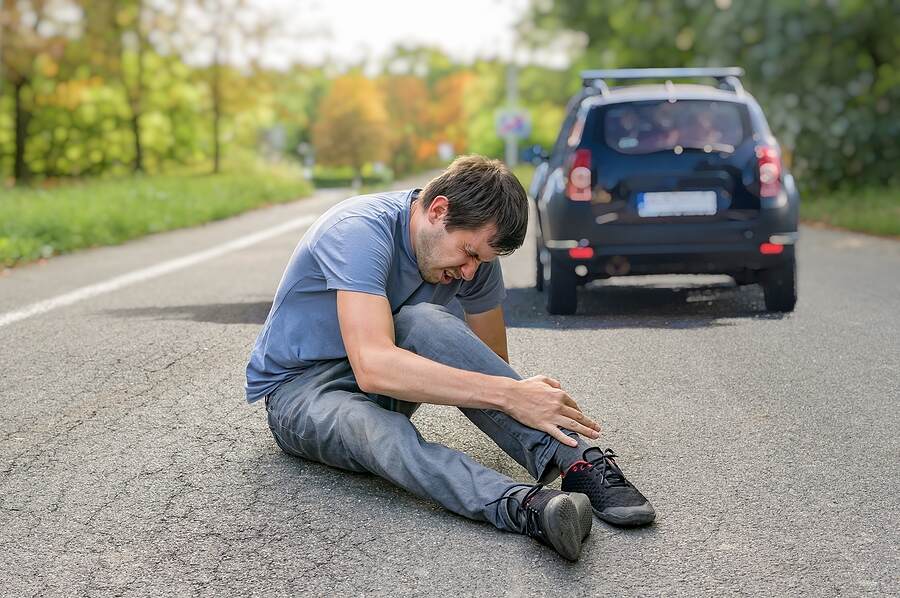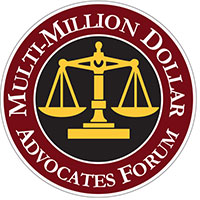
When a hit-and-run driver leaves an accident scene, their actions intensify an already bad situation. If you are like most drivers, you would prefer to avoid post-accident complications too, but you comply with your legal obligations.
Unless you sustain disabling injuries, you exit your car and do what is right. You exchange license and insurance information, then you dial 911. When a law enforcement officer arrives, you wait patiently while they document the facts, obtain both drivers’ versions, and produce a formal accident report.
A hit-and-run driver’s actions do not comply with traditional post-accident expectations. They drive away, sometimes leaving injured people alone until the police officer or EMT arrives. You give the authorities your one-sided account of the accident and hope they believe your version. You also hope that the physical proof supports your hit-and-run story. Even if it does, the other driver’s actions still affect any injury claim you make.
Why Do Hit-and-Run Accidents Occur?
When a hit-and-run driver injures you in a crash, the circumstances usually involve the same types of negligent actions that cause most accidents.
- Distracted driving due to issues inside or outside of the vehicle
- Driving while drowsy, due to lack of sleep or long hours on the road
- Speeding out of habit or intentionally flaunting the law
- Driving under the influence of alcohol and/or legal or illegal drugs
- Age-related driving issues: Inexperience, medical disabilities, visibility issues
Drivers Make Choices Based on Their Circumstances
After an accident occurs, each driver must immediately consider their next step. Most motorists choose compliance with local statutes. They consider insurance obligations and ethical concerns. During those same post-accident moments, hit-and-run drivers simply drive away.
They act impulsively or intentionally yield to self-centered considerations.
- Driving under the influence of drugs or alcohol
- Has a bad driving record and does not want to risk losing their license or having their car impounded
- Does not have a valid driver’s license
- Does not have insurance
- Has insurance but does not want to risk cancellation, non-renewal, or a premium increase
- Driving someone else’s car, with or without permission
- Simply wants to escape the consequences of their actions
Accident Data Reveals Hit-and-Run Trends
A study published by the Journal of Safety Research contains some interesting facts about hit-and-run accidents.
Researchers evaluated past studies to determine key factors involved in fatal crashes where the driver left the scene.
- Authorities never identified 50 percent of hit-and-run drivers.
- When authorities found the drivers responsible for pedestrian fatalities, they were frequently young males.
- Motorists driving older vehicles left accident scenes at a rate 45 percent higher than newer vehicle drivers.
- A past DUI conviction increased the risk that a driver would leave the scene after fatally injuring a pedestrian.
- Analyzed data showed that an invalid license increased the potential for a hit-and-run response by 400 percent.
- Hit-and-run accidents occurred more frequently at night.
Leaving an Accident Scene Is a Criminal Offense
Hit-and-run is a criminal offense, but you probably will not see that phrase in most state or local vehicle statutes. Vehicle statutes that describe a driver’s duty to stop after an accident, include an inherent prohibition against hit-and-run accidents. When a driver strikes your car, their actions become criminal only if they leave the scene without identifying themself.
If the authorities eventually locate a hit-and-run driver, they usually charge them with a misdemeanor or, in some cases, a felony. Depending on the circumstances, the criminal justice system sometimes penalizes a hit-and-run driver with fines, jail time, and/or license suspension.
It Is Criminal Because it Is Intentional
A hit-and-run is an intentional act. Drivers realize that they must stop even if they believe they are not legally responsible for an accident.
Even novice drivers learn they have no excuse for leaving an accident scene without complying with these requirements.
- Drivers must stop and identify themselves after an accident.
- They must produce proof of insurance.
- If anyone sustains injuries, they must help them, then report the accident to the local or state police.
- Most states have a property damage dollar limit. When property damage exceeds that limit, the driver must report it.
- Some states allow non-injury accident reporting to a police location within a stated time frame.
Nationwide Hit-and-Run Statistics
Unless a driver struck your car and left the scene, you have probably never considered how frequently hit-and-run accidents occur. The National Highway Traffic Safety Administration tracks the numbers throughout the country. NHTSA Fatality and Injury Reporting System Tool (FIRST) inquiries provide the most recent annual nationwide statistics.
The NHTSA defines pedalcycles as bicyclists and other cycles, including two-wheel, non-motorized vehicles, tricycles, and pedal-only unicycles.
- Total Hit-and-Run Crashes: 814,456
- Fatal Hit-and-Run Crashes: 1,929
- Pedalcycle: 136
- Pedestrian: 1,279
- Motorcycle: 151
- Injury Only Hit-and-Run Crashes: 240,758
- Pedalcyclist: 7,664
- Pedestrian: 16,291
- Motorcyclist: 9105
- Property Damage Only Crashes: 571,760
Uninsured Motorist Coverage Pays When You Cannot Identify the At-Fault Driver
States enact laws to ensure that injured people have insurance available to pay for injuries. Many states have financial responsibility laws requiring that all drivers maintain liability insurance. This provides a resource that pays when one driver injures another.
Several states have No-Fault laws. An injured victim’s own auto insurance policy pays their accident-related lost wages and medical bills. The injured person qualifies to file a liability claim only after their injuries meet a statutory tort threshold.
When a driver injures you and leaves the scene unidentified, you cannot file a claim against them. You have another option when you have uninsured motorist coverage on your auto insurance policy. UM coverage pays your injury claim when there is not a valid liability policy in force.
The coverage applies under these circumstances:
- Another driver is legally responsible for injuring you.
- The driver left the scene without identifying themselves.
- The driver is negligent but has no insurance or their insurer declined coverage.
- The negligent driver’s insurance company is insolvent.
Uninsured motorist coverage is mandatory only in some states. Many states require that insurers offer you UM coverage and give you a chance to reject it. When you have UM coverage, your auto insurance company pays your injury claim on behalf of the unidentified negligent driver.
Your own insurer establishes a claim file and investigates the accident the way the other driver’s insurance carrier would have, had they not left the scene. They determine if the other person’s negligence caused your injuries. If they feel you have a valid claim, they negotiate a settlement with you.
This often places you and your insurer in adversarial positions. It also creates a conflict of interest because your insurer fills the roles of both your insurance company and the other driver’s liability insurance company. If the authorities identify the hit-and-run driver, you must assist your insurer’s subrogation efforts in recovering any losses they pay.
Do You Need a Car Accident Attorney?
Hit-and-run accidents are sometimes frustrating, especially when you believe you have no resources to pay your lost wages and medical bills. A hit-and-run attorney reviews your auto policy, advises you of your coverage rights, and protects legal interests. They check all sources to determine if you have other available coverage. Even if you have a valid uninsured motorist claim, insurers would not necessarily tell you.
When you consult a car accident attorney, you can discuss your accident and review your options. Your initial appointment is a complimentary, information-only meeting. You decide if and when to file a claim.









